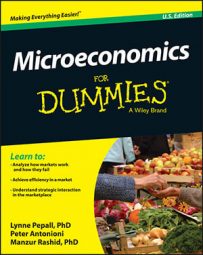Economists begin with a model that has rational agents — in the sense that they are logically consistent in their behavior — and they make the fewest assumptions about the tastes or preferences of these agents. Because economists don't know very much about the people they're modeling — there are 7 billion people on Earth, after all — starting with what you think is common to them all makes sense.
The assumptions are described here so that you can see what lies behind all the models that economists build from those foundations:
(Local) Non-satiation: In general, a person prefers more of something to less of it. The local aspect acknowledges that the assumption holds at times. For instance, after the 10th slice of chocolate cake, people don't prefer more to less; but up to a certain point, they generally do.
Completeness: You can take a list of the possible choices or actions that can be made in a situation and rank them from best to worst, even if some of them may be choices of equal rank. This means that you can associate with that ranking a utility function (a mathematical representation of the consumer's preferences) that incorporates all those choices.
Transitivity: If an agent prefers one thing to a second thing, and the second thing to a third thing, it must follow that the agent prefers the first thing to the third. So, if you prefer tea to coffee and coffee to cocoa, you prefer tea to cocoa. Again, if preferences aren't transitive, the ranking or the utility function would be inconsistent, and you wouldn't be able to use it to build models.
Reflexivity: Any bundle of goods is at least as good as itself, so that the utility associated with a bundle isn't surpassed when the same bundle is offered in a different way.
When these conditions are satisfied, economists say that a person's preferences are well-behaved. This term means that they satisfy all the mathematical conditions that ensure consistent behavior and therefore it's a suitable tool for modeling choices in the context of a market. More exactly, it means that you can construct a utility function to represent the consumer's preferences.

